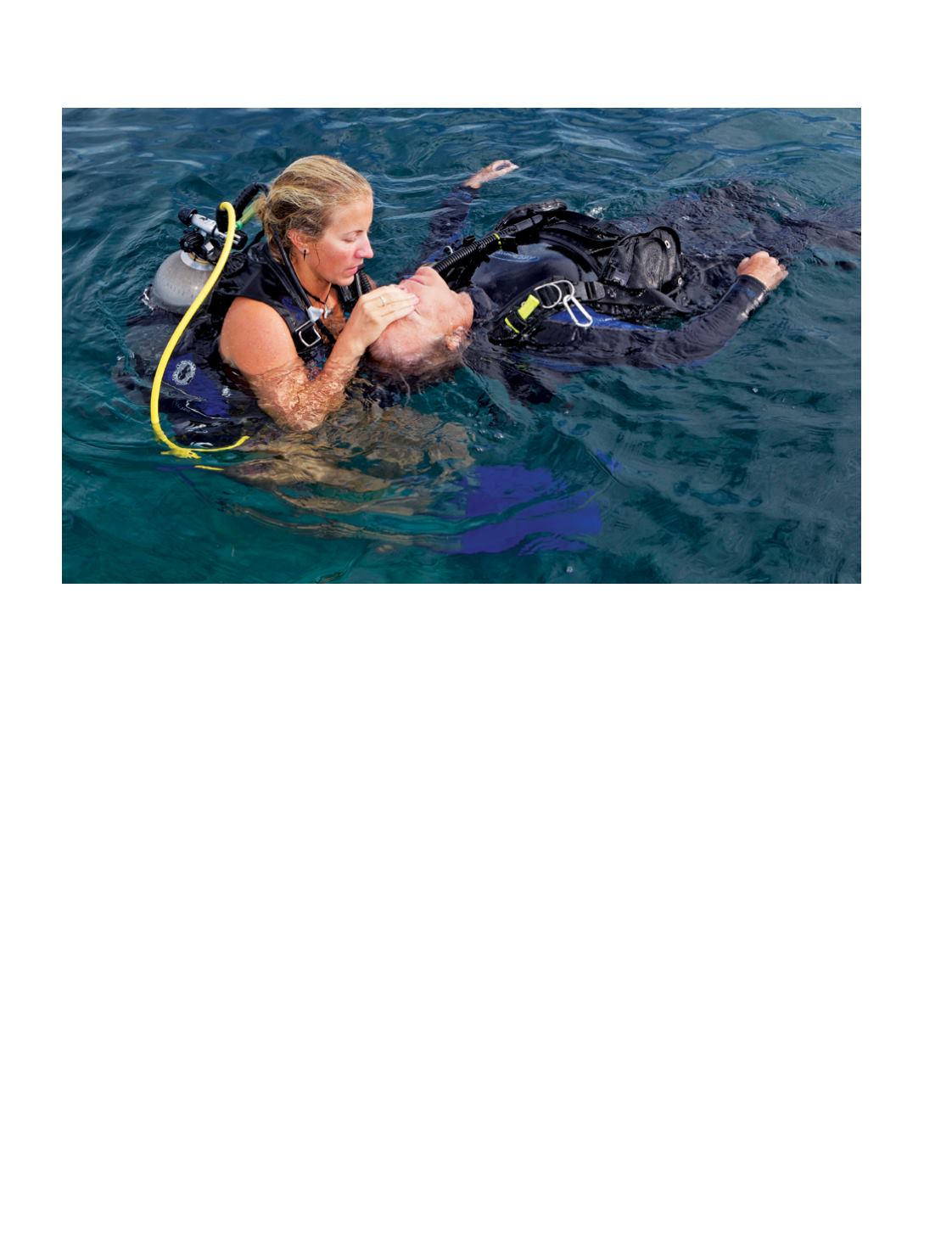
52
|
fall 2013
D
ive accidents are rare events, but they do happen.
When divers become unconscious underwater,
they face an incredibly high risk of injury or
death. In these situations, the victim’s fellow
divers must draw on their strength, training and intelligence
to bring about the best possible conclusion to the emergency.
Rescues of unconscious divers are very complicated events,
and even perfect, by-the-book rescue attempts by the most
well-trained people frequently result in poor outcomes.
There are many reasons why a diver might lose
consciousness underwater. It may result from a lack of
oxygen (hypoxia), a medical emergency such as a heart
attack, an excess of carbon dioxide (hypercapnia) or
an excess of oxygen (oxygen toxicity). One thing these
situations have in common is the need to get the diver
out of the water and into the hands of qualified medical
professionals as quickly as possible.
Background
In 2007 the Undersea and Hyperbaric Medical Society (UHMS)
Diving Committee was asked to review the practices being
taught for in-water resuscitation. Our committee, chaired by
Dr. Simon Mitchell, is comprised of an international team of
experts in diving and hyperbaric medicine.
The now defunct YMCA Scuba Program had requested
guidance following new recommendations that appeared in
the 2005 American Heart Association’s Emergency Cardiac
Care standards, which emphasized compressions during
cardiopulmonary resuscitation (CPR). Confusion was arising
during courses and training drills about the administration
of ventilations (rescue breaths) while on the surface with a
victim. The scope of this review was expanded at the request
of the scientific diving community as well as committee
member Jarrod Jablonski of the Global Underwater Explorers
(GUE) training agency. Jablonski requested a more detailed
review that included consideration of oxygen toxicity events.
Methods
The review was drafted primarily by Drs. Simon Mitchell
and Michael Bennett. The reviewers first identified the
questions to be addressed and then conducted an exhaustive
literature review to identify the best possible evidence to
support the committee’s conclusions. In situations where
supporting literature or case histories were not available,
committee consensus was reported.
Our team used the Professional Association of Diving
Instructors (PADI) Rescue Diver Manual as a starting point
for the expected behavior of a rescue diver assisting a victim.
Rescues were analyzed and reviewed in three phases:
1. preparation for ascent to the surface, 2. retrieval of the
victim to the surface, and 3. procedures for the care of the
victim at the surface. Special considerations for victims found
with a rebreather were reviewed for each of these phases.
Summary
The submerged-diver-rescue decision tree is a graphical
RESEARCH, EDUCATION & MEDICINE
//
S A F E T Y 1 0 1
Rescue of an Unconscious Diver
B y G e n e H o b b s
STEPHEN FRINK


